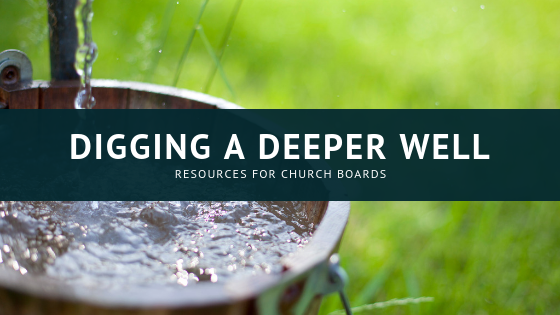For the last several weeks we have been talking about the “volunteer line” and how it is increasingly difficult for congregational leaders to recruit participants for the activities and organizations under their umbrella. Sometimes, church board members, pastors, and/or those active in churches see this “volunteer census” as a sign of congregational health…or lack of health.
How do you measure the health of your church?
When it comes to the “Annual Report” that pastors and congregations are asked to fill out for their denominations, there is almost never a question beyond the data: nothing about spiritual health, strategic vision, or theological vitality. They have been asked about membership, and then about average weekly attendance. They have been asked to provide budgets and statistics about the make-up of their congregations. But seldom have they been asked to report on spiritual maturity, or year over year growth in deep engagement with scripture, as an index of a congregations’ prayer life.
Writing in Faith and Leadership several years back, Dave Odom declared, RIP Average Attendance:
Church attendance was once a key indicator of a virtuous cycle [a series of events that have beneficial impact on the other events within an organization]. If the church could get a new person in the pew regularly, offerings would go up, involvement in small groups and missions would climb, and the church would be healthy. If attendance was declining then everything else would eventually decline. The growing lack of dependability on attendance is a sign that the virtuous cycles that have sustained congregations since the end of World War II are collapsing. In order to sustain congregations over the long haul, new cycles need to be developed. Once that begins to happen, new measures can be identified.
- What indicators of health has your congregation traditionally tracked? What ‘virtuous cycle’ of events do these indicators presuppose?
- Do you think those indicators are still reliable for measuring the health of your congregation? Can you say why or why not?
- What indicators of success might you want to track instead? What virtuous cycle of events would they help you define for your congregation?
Another way to approach this challenge might be to ask ourselves, intuitively, what congregational success would look like in this place and time–to start with our imagination of congregational health. So, for starters, what does a healthy church look like to you? What is happening when you know you are succeeding? What will be happening five years from now if you do succeed?
Writing in his journal 1859, Henry David Thoreau put forward one way to measure health: Measure your health by your sympathy with morning and spring. If there is no response in you to the awakening of nature,—if the prospect of an early morning walk does not banish sleep, if the warble of the first bluebird does not thrill you,—know that the morning and the spring of your life are past. Thus may you feel your pulse.
- What do you make of Thoreau’s claim that “If there is no response in you to the awakening of nature,—if the prospect of an early morning walk does not banish sleep, if the warble of the first bluebird does not thrill you,—know that the morning and the spring of your life are past”? Is this a valid test of health . . . or a dangerous one?
- How would you measure your congregational health?
- As a congregation, when and where do you “feel your pulse?”








No Comments